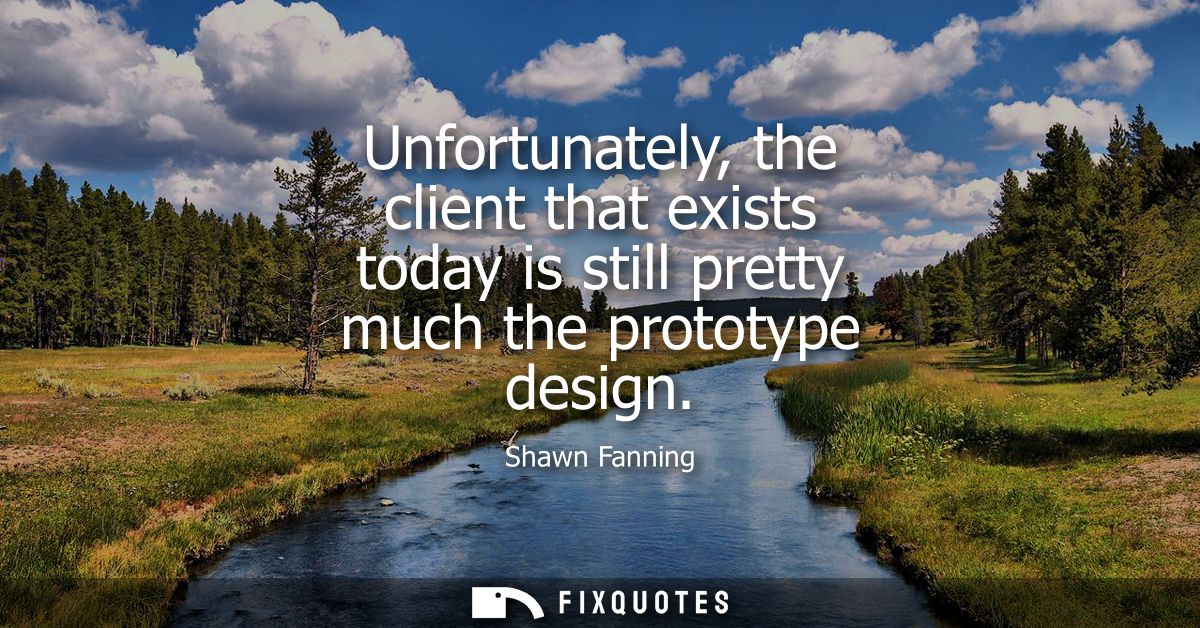"Unfortunately, the client that exists today is still pretty much the prototype design"
About this Quote
Shawn Fanning reflects on the state of a software project, noting that what users and developers experience remains essentially a prototype, not a finalized or fully polished version. His statement suggests that the initial concept, vision, and experimental approaches laid out in the beginning still dominate the current implementation. Often, a prototype design is built to test ideas, validate technical feasibility, and refine core user experiences, but it is not intended as an end product. Fanning’s perspective implies a level of dissatisfaction or concern: while a prototype is useful for iteration, its prolonged use as a primary client signals slow development, resource constraints, or shifting priorities.
Software that remains at the prototype stage may lack robust features, performance optimizations, scalability, or a refined user interface, which are hallmarks of a mature product. Users might encounter bugs, incomplete features, or design inconsistencies because the rapid, experimental work typical of the prototype phase did not transition into a disciplined, production-ready effort. For developers and the broader community, this can be a double-edged sword. On one hand, a “living prototype” facilitates ongoing experimentation and community involvement. On the other, it can limit adoption, dampen professional confidence, and slow broader deployment.
Fanning’s observation may also reflect the trajectory of many groundbreaking tech projects, early energy and creativity can sometimes outpace the ability to industrialize and scale. The software client in question, remaining a prototype, hints at rapid technological changes and evolving user expectations, making it difficult for the project to settle on stable ground. Ultimately, Fanning’s words carry a subtext of ambition and perhaps frustration: the desire to move beyond early concepts into something robust, widely deployable, and enduring, yet feeling the weight of practical inertia that keeps the project from reaching its full potential.
More details
About the Author

